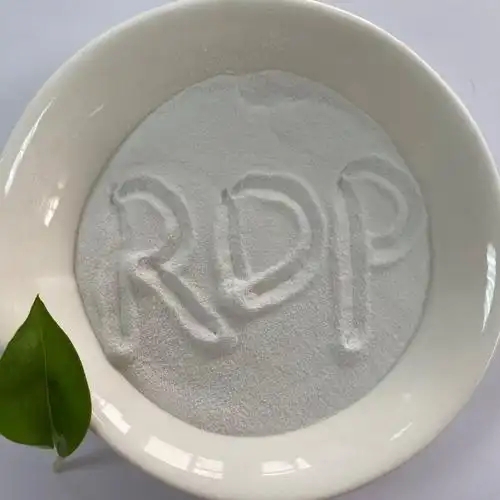
Redispersible polymer powder (RDP), as a type of powder adhesive, is extensively utilized in the construction sector. The quality of this powder is crucial, as it directly impacts the overall quality of construction projects. With the swift expansion of China's building energy-saving market, an increasing number of R&D and manufacturing firms are producing RDP products, broadening consumer options. However, this abundance has also led to a degradation in the quality of RDP, with some unscrupulous manufacturers compromising standards to cut costs. They produce substandard goods, sometimes even counterfeiting genuine products, selling them as RDP at reduced prices, which not only disrupts the market but also misleads consumers.
Kemox is here to provide you with some basic techniques for assessing the quality of redispersible polymer powder.
Firstly, inspect the appearance. Utilize a glass rod to apply a thin layer of the powder onto its surface, and observe its consistency and color.Apply a minimal quantity of the dispersible polymer powder thinly and evenly across the surface of a pristine glass plate. Position the glass plate atop a sheet of white paper and visually examine the particles' appearance. The dispersible polymer powder should present as a white, free-flowing, consistent powder with no irritant odor. Should the powder exhibit an atypical color, contain impurities, coarse particles, or a pungent smell, the quality may be compromised.
Examine the solubility:
Dissolve a measured portion of the dispersible polymer powder in five times its mass in water. Stir the mixture vigorously and let it sit for five minutes to observe. The lesser the precipitation that settles at the bottom, the higher the quality of the dispersible polymer powder.
Inspect the ash content:
Weigh a specific amount of the dispersible polymer powder and transfer it to a metallic container. Heat the container to 800┬░C and allow it to burn for 30 minutes. After cooling to room temperature, re-weigh the container. A lighter ash content indicates a relatively superior quality.Gaze upon the Film-Forming Attributes
The film-forming characteristics serve as the cornerstone for the modification and enhancement of bonded mortar. In cases where the film-forming properties are subpar, this is typically attributed to an excessive augmentation of inorganic components or the misuse of organic ingredients.
High-quality redispersible polymer powder, when at room temperature, exhibits commendable film formation. Conversely, if the film is not up to par at room temperature, it often indicates issues with the polymer or ash quality.
To assess the quality of a particular redispersible polymer powder, follow this procedure: mix a specific quantity of the powder with an equal volume of water, ensuring uniform mixing for two minutes post-stand time. Repeat the mixing process. Subsequently, pour the mixture onto a level, clean glass surface and allow it to dry in a well-ventilated, shaded area. Once sufficiently dried, remove the polymer film for examination.
A high-quality film will demonstrate high transparency and possess good elasticity upon gentle stretching. Moreover, when the film is cut into strips and submerged in water for one day, those strips that resist dissolution are indicative of superior quality.
For further insights, consider exploring wholesale redispersible polymer options.This method, described above, is merely a basic testing technique and does not guarantee a comprehensive assessment of quality. It serves primarily as an initial evaluation. To adhere to a more objective standard, the glue powder should be mixed into the mortar as directed, following the established specifications for mortar testing in accordance with the relevant mortar quality standards.
